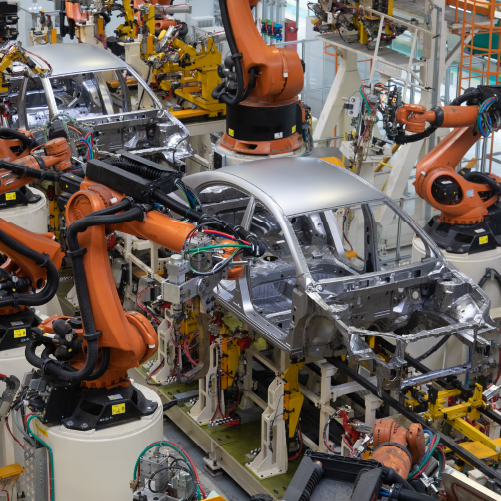Automotive Applications
Automotive
Long and intricate suppliers and the criticality of tracing every component in this long chain makes permanent marking a crucial necessity of the aerospace industry. The industry is vulnerable to disasters and uses multiple metal surfaces from stainless steel to aluminium to titanium requiring precision marking techniques to trace components. Laser marking is key to the aerospace industry as the parts meet highest standards of quality and safety and the marking should be readable to the human eye as well as scanners.
Surfaces For Marking
Day and night markings on avionic panels |micro and major electrical, mechanical and electronic constituents | Chips, circuit boards and other navigation devices | wings and blades | thrusters and actuators | branding and bar coding on exteriors

Dot peen marking and laser marking machines are both widely used in the automotive industry for permanent part identification, traceability, and quality control. Each technology has its own advantages, and their usage depends on specific requirements and preferences. Here’s a brief overview of how dot peen marking machine and laser marking machines are utilized in the automotive industry:
### Dot Peen Marking:
- Marking Process:
– Dot peen marking involves using a pneumatically or electromagnetically driven stylus to create a series of small, closely spaced dots on the surface of a material.
– The dots form alphanumeric characters, logos, or other symbols to identify parts.
- Materials:
– Dot peen is suitable for marking a variety of materials, including metals, plastics, and composites commonly found in automotive components.
- Applications:
– VIN (Vehicle Identification Number) marking on chassis and engine components.
– Part numbering for traceability.
– Date codes and batch numbers on parts.
– Logos and branding on components.
- Advantages:
– Durable and deep markings.
– Well-suited for harsh environments.
– Cost-effective for certain applications.
### Laser Marking:
- Marking Process:
– Laser marking involves using a laser beam to remove or alter the surface of a material, creating high-contrast marks without physical contact.
- Materials:
– Laser marking is versatile and can be used on various materials, including metals, plastics, glass, and ceramics.
- Applications:
– Part serialization and traceability.
– 2D matrix codes for part tracking.
– Decorative markings for branding.
– Fine and detailed markings.
- Advantages:
– High precision and fine detail.
– Non-contact process, reducing wear on equipment.
– Faster marking speed for certain applications.
– Flexibility in terms of design and customization.
### Integration in Automotive Production:
- Assembly Line Integration:
– Both dot peen and laser marking machines can be integrated into automated assembly lines for continuous and efficient marking.
- Quality Control:
– Markings serve as a form of quality control, ensuring that each part is properly identified and meets the required standards.
- Traceability:
– The ability to trace parts through the manufacturing process and the life cycle of a vehicle is crucial for quality assurance and recalls.
In summary, dot peen and laser marking technologies are integral to the automotive industry, offering solutions for part identification, traceability, and quality control. The choice between the two depends on specific material requirements, precision needs, and the nature of the markings desired for a particular application within the automotive manufacturing process.

